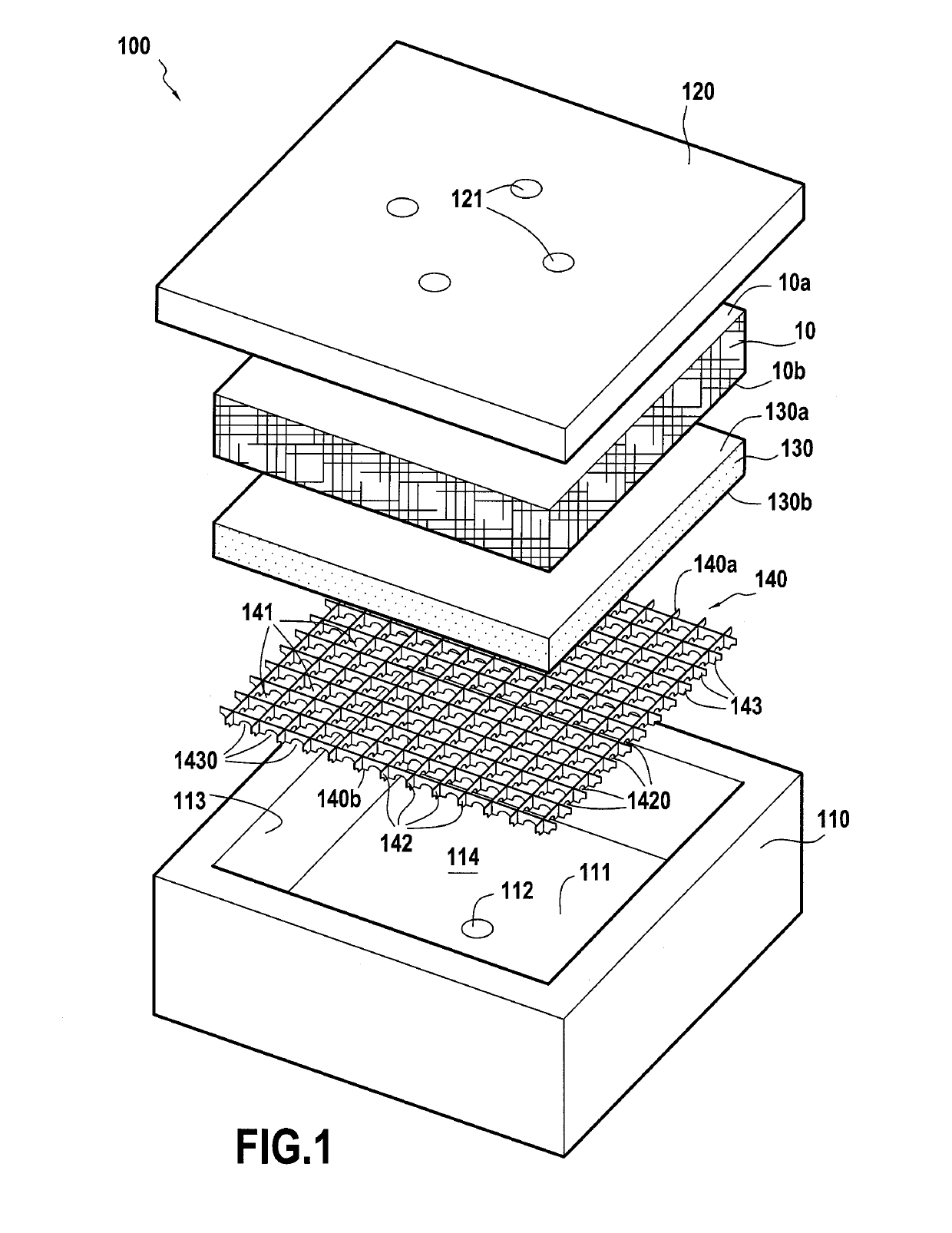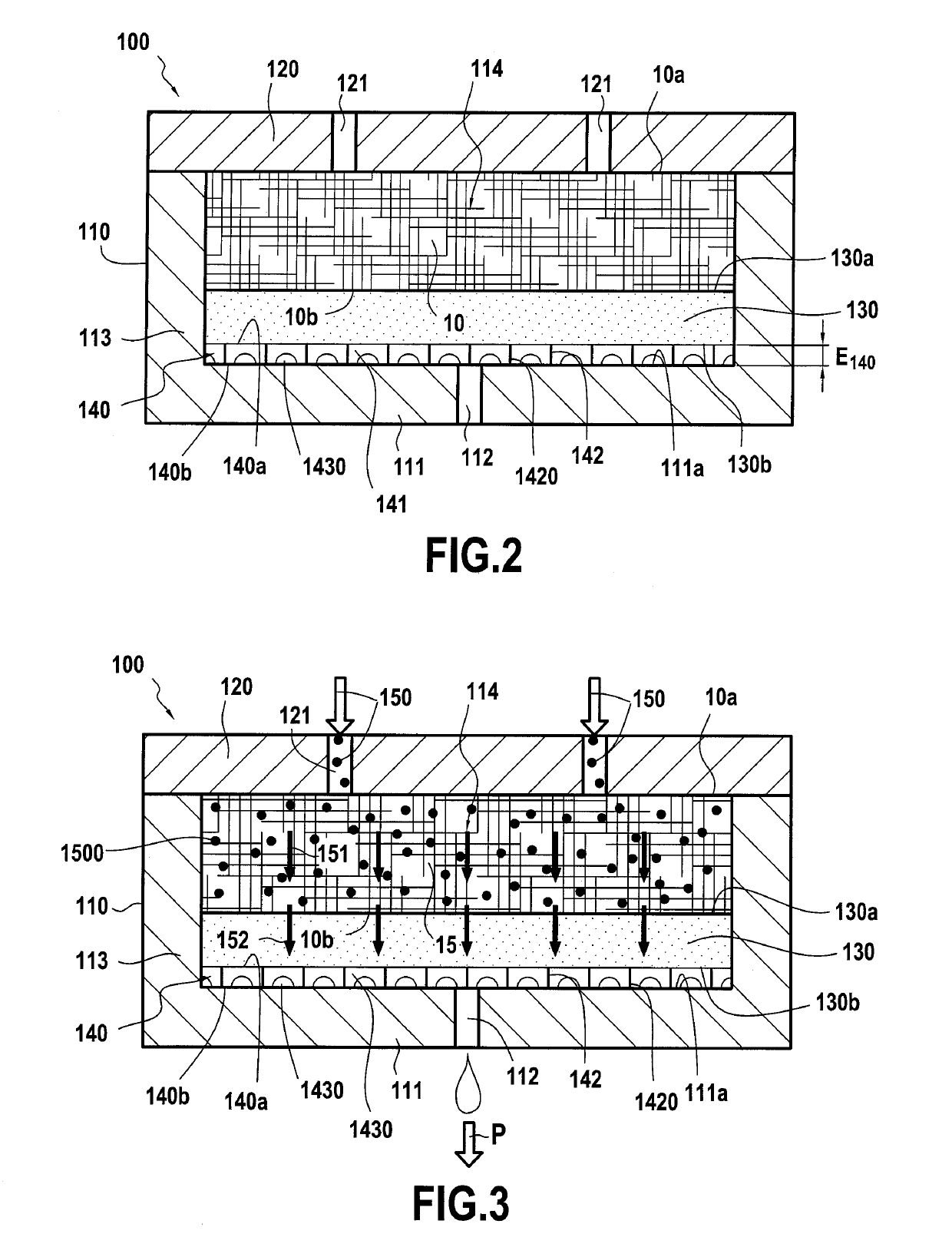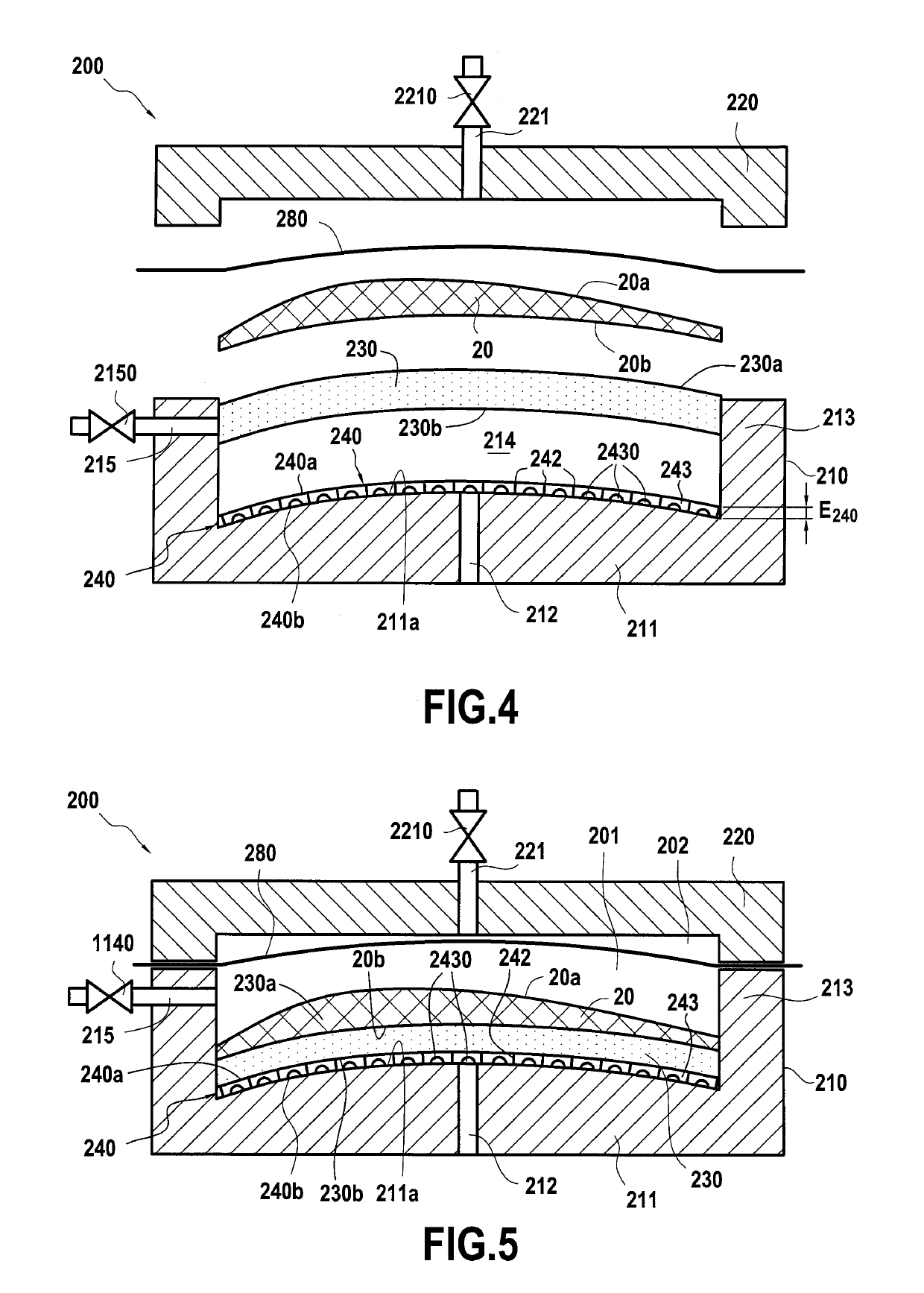A method of fabricating a composite material part by injecting a filled slurry into a fiber texture
a composite material and filling technology, applied in the direction of woven fabrics, machines/engines, textiles and paper, etc., can solve the problems of poor delamination resistance of materials, and difficult control of the entire fiber texture, so as to facilitate the flow of liquid and improve mechanical properties.
- Summary
- Abstract
- Description
- Claims
- Application Information
AI Technical Summary
Benefits of technology
Problems solved by technology
Method used
Image
Examples
Embodiment Construction
[0034]The method in accordance with the present invention for fabricating a composite material, in particular of the oxide / oxide or CMC type, begins by making a fiber texture that is to form the reinforcement of the part.
[0035]In known manner, the fiber structure is made by weaving using a Jacquard type loom having a bundle of warp yarns or strands arranged in a plurality of layers, the warp yarns being interlinked by weft yarns, or vice versa. The fiber texture may be made by stacking plies obtained by two-dimensional (2D) weaving. The fiber texture may also be made directly as a single part by three-dimensional (3D) weaving. The term “two-dimensional weaving” is used herein to mean a conventional weaving technique in which each weft yarn passes from one side to the other of the yarns in a single layer of warp yarns, or vice versa. The method of the invention is particularly suitable for enabling a filled slurry to be introduced into 2D fiber textures, i.e. textures obtained by sta...
PUM
| Property | Measurement | Unit |
|---|---|---|
| diameter | aaaaa | aaaaa |
| thickness | aaaaa | aaaaa |
| diameter | aaaaa | aaaaa |
Abstract
Description
Claims
Application Information
 Login to View More
Login to View More - R&D
- Intellectual Property
- Life Sciences
- Materials
- Tech Scout
- Unparalleled Data Quality
- Higher Quality Content
- 60% Fewer Hallucinations
Browse by: Latest US Patents, China's latest patents, Technical Efficacy Thesaurus, Application Domain, Technology Topic, Popular Technical Reports.
© 2025 PatSnap. All rights reserved.Legal|Privacy policy|Modern Slavery Act Transparency Statement|Sitemap|About US| Contact US: help@patsnap.com



